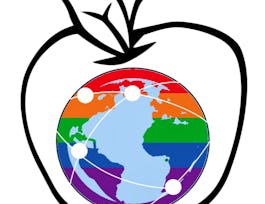This is Class 2 of the MOOC Specialization, Become a Sustainable Business Change Agent.


More on Change and Sustainability
This course is part of Become a Sustainable Business Change Agent Specialization
Taught in English
Some content may not be translated


Instructors: Kenneth Bettenhausen
Top Instructor
7,303 already enrolled
Included with 
Course
(91 reviews)
Details to know

Add to your LinkedIn profile
4 quizzes
Course
(91 reviews)
See how employees at top companies are mastering in-demand skills

Build your subject-matter expertise
- Learn new concepts from industry experts
- Gain a foundational understanding of a subject or tool
- Develop job-relevant skills with hands-on projects
- Earn a shareable career certificate


Earn a career certificate
Add this credential to your LinkedIn profile, resume, or CV
Share it on social media and in your performance review

There are 6 modules in this course
Introducing change in a organization is not simple. Initiatives you think are 'no brainers' can face opposition and more complex change requires careful planning. Your success in initiating change depends on your ability to understand and leverage the organizational forces that constrain and empower individual discretion. In this module you will learn that initiating change requires both leadership and effective management. You will learn how to identify the forces at work in the organization that can be tapped to drive change and the forces that maintain the status quo, restraining change to the new state. Finally, you will identify the ways that the roles people hold in organizations constrain their behavior in predictable ways...that you can use to anticipate opposition and identify potential allies.
What's included
5 videos1 reading1 quiz
Organizations often don't act rationally, at least not from your position in the firm. That's because people in different parts of the organization are responsible for different things...and whose initiatives get implemented is a political process that requires you to gain support from people who are not directly affected by the change and avoid active opposition by people who have other projects and ideas that they think are more important than what you want to propose. In this module you will examine the political side of introducing change and examine the choices you have when introducing change. And, you will learn two tools for understanding, and leveraging, the political 'lay of the land' to gain the support needed to have your maintainability initiatives accepted where you work or live.
What's included
5 videos2 readings1 quiz
IntroductionThis module introduces the key ideas of green design or design for the environment (DfE). The design phase of a product or building usually only absorbs a small fraction of the entire budget, but determines the product's or building's impact for years to come. Therefore, getting design right is crucial to achieving sustainability. Once your company has designed and developed a good product you need to convey that to consumers. We talk about labeling as one means of doing this. We also discuss problems with 'greenwashing' or over-stating a product's green attributes. In this module we introduce Life-Cycle Assessment (sometimes Life-Cycle Analysis or LCA). This is a powerful tool for identifying where a product's major impact comes from, which allows the company to redesign targeting those high impact areas. Next week we practice doing an LCA.
What's included
7 videos3 readings1 quiz2 peer reviews1 discussion prompt
Sustainability reporting or CSR (Corporate Social Responsibility) reporting is becoming commonplace among medium and large companies. Web-based reporting is fairly inexpensive and a good way to begin reporting, if your company doesn't already issue or post some type of report. This module discusses four reasons for doing CSR reporting, what makes a report credible to stakeholders, and mentions some of the reporting standards that your should consider using.The standards I discuss are GRI (Global Reporting Initiative), which is an overall template, CDP (formerly the Carbon Disclosure Project) that specifically address carbon and water reporting, and SASB (Sustainability Accounting Standards Board), which identifies the key performance indicators (KPIs) for different industries. The three standards are not mutually exclusive, but fit together.The second video gives an overview of how reports are generally structured and describes what two experts look for when they read sustainability reports. Knowing what experts see as strengths and weaknesses will help you develop a better report. There are two short videos from GRI that gives an overview of its reporting framework. Roger Stace jobs us and gives his perspective on CSR reporting. There is a discussion of the quality of some CSR reports that are posted as READINGS. The reports we will discuss are VW, Carnival Cruises and H&M, the fast fashion clothing company.
What's included
5 videos3 readings1 quiz1 discussion prompt
What's included
5 videos1 reading1 discussion prompt
This assessment will help you practice identifying the key sustainability performance indicators (KSPIs) for your company. The assignment asks you to choose a business sector from a list of four sectors, think about the sector and identify 3 to 5 key indicators, then compare your list to the list compiled by the experts at SASB (Sustainable Accounting Standards Board). We hope this hones your skills in identifying KSPIs for you company.
What's included
1 reading1 peer review
Instructors


Offered by
Recommended if you're interested in Leadership and Management

University of Colorado System

The Open University

University of Colorado System

University of California San Diego
Why people choose Coursera for their career




Learner reviews
Showing 3 of 91
91 reviews
- 5 stars
83.51%
- 4 stars
13.18%
- 3 stars
3.29%
- 2 stars
0%
- 1 star
0%
New to Leadership and Management? Start here.

Open new doors with Coursera Plus
Unlimited access to 7,000+ world-class courses, hands-on projects, and job-ready certificate programs - all included in your subscription
Advance your career with an online degree
Earn a degree from world-class universities - 100% online
Join over 3,400 global companies that choose Coursera for Business
Upskill your employees to excel in the digital economy
Frequently asked questions
Access to lectures and assignments depends on your type of enrollment. If you take a course in audit mode, you will be able to see most course materials for free. To access graded assignments and to earn a Certificate, you will need to purchase the Certificate experience, during or after your audit. If you don't see the audit option:
The course may not offer an audit option. You can try a Free Trial instead, or apply for Financial Aid.
The course may offer 'Full Course, No Certificate' instead. This option lets you see all course materials, submit required assessments, and get a final grade. This also means that you will not be able to purchase a Certificate experience.
When you enroll in the course, you get access to all of the courses in the Specialization, and you earn a certificate when you complete the work. Your electronic Certificate will be added to your Accomplishments page - from there, you can print your Certificate or add it to your LinkedIn profile. If you only want to read and view the course content, you can audit the course for free.
If you subscribed, you get a 7-day free trial during which you can cancel at no penalty. After that, we don’t give refunds, but you can cancel your subscription at any time. See our full refund policy.

